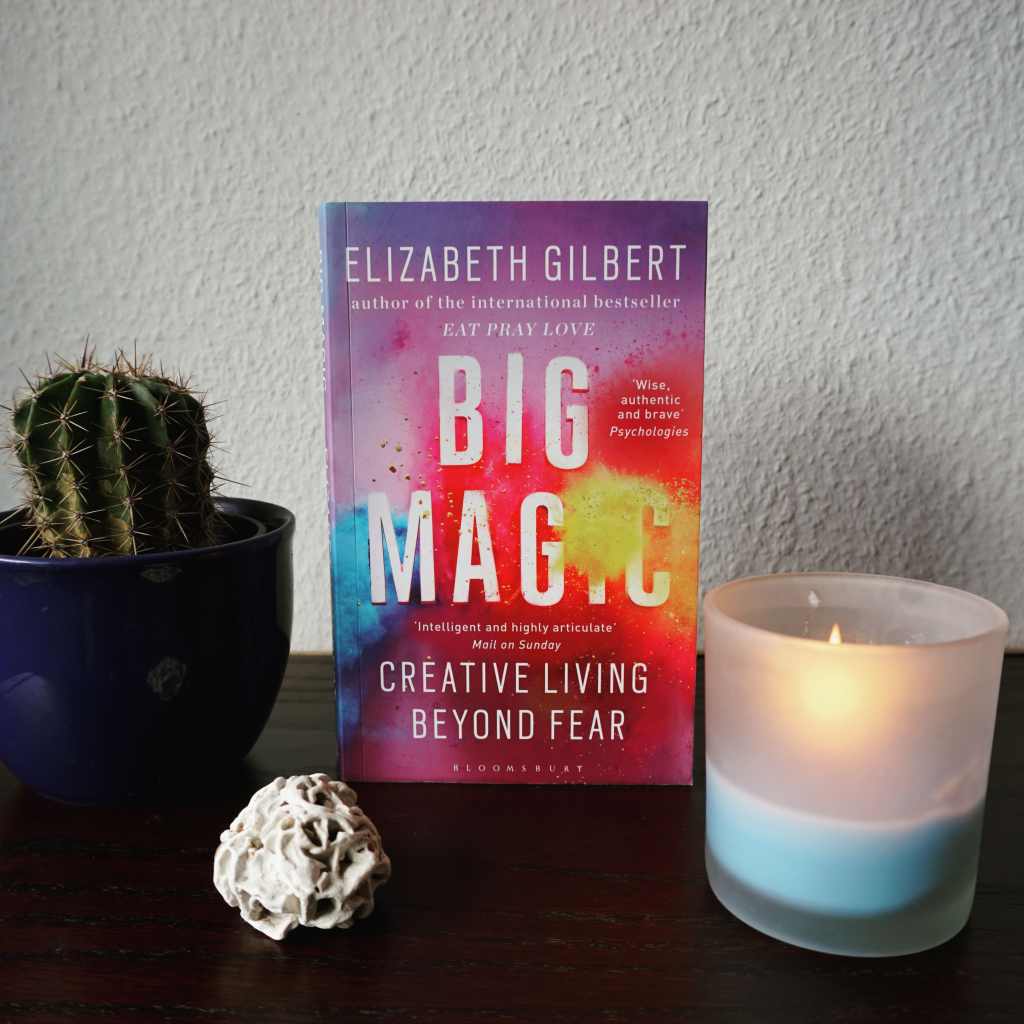Tags
20 Books of Summer, 20 Books of Summer 2021, 3.5 stars, Big Magic, books, Elizabeth Gilbert, first time read, nonfiction, own book, read in 2021, reading, review

Title: Big Magic. Creative Living Beyond Fear
Author: Elizabeth Gilbert
First published: 2015
Dates read: 02. 08. – 07. 08. 2021
Category: first time read, own book, non-fiction
Rating: 3.5/5
The book in five words or less: potential to be motivational
My thoughts:
Written after the immense success of her memoir Eat, Pray, Love, Big Magic is Elizabeth Gilbert’s creative manifesto. It is, in its essence, a long pep talk encouraging the reader to let creativity take up more – or, in some cases, any – space in their life. Gilbert does not, as the book’s title might suggest, advocate for a creative life in the sense of a creative career. Rather, she is thinking on a much smaller scale: The book’s main purpose, I would argue, is to encourage and to give permission for creative living in everyday life: Permission to make space for creativity, permission to seek out inspiration, permission to imagine and wonder, permission to let creative endeavours be imperfect, and permission to not turn everything you enjoy into a career.
Closely linked to the idea of giving permission is the idea of letting go of fear, another of the central aspects of the book. It is therefore hardly surprising that Gilbert spends some time discussing the different aspects of fear: fear of failure and the uncertainty of creative endeavours, expectations of success and the fear that it might not manifest, the fear that comes with expecting creative endeavours to take care of one’s financial needs, etc. To do so, she employs a lot of personal anecdotes (both from her own life and that of friends), a colloquial style, and humour (that may or may not work for you). She rounds this all off by outlining her understanding of inspiration – an almost magical, spiritual conception of free-floating ideas whose main aim is to be realized by a creative person – and a couple of thoughts on developing trust in the creative process.
I’m not sure I agree with Elizabeth Gilbert’s magical thinking around creativity and inspiration (creativity is not a spiritual practice for me, although I can see why it might be for other people) but I did appreciate how it helps her to encourage imperfection, prioritise the creative process over the end product, and understand creativity, learning and growth as life-long processes that do not depend on formal education. I also liked that Gilbert strongly emphasizes that ‘creative suffering’ is not the only way of living creatively. In fact, she argues, it is indeed possible to make valuable art without being in active emotional distress, and she also points out that self-destructive behaviour and mental and physical anguish can be actively detrimental to creative endeavours.
In short, Big Magic is not the deepest or most revolutionary book I have ever read, nor is it one where I agree with every single one of the author’s assertions. I have spent enough time questioning my own creative and academic work to know that, on a deep level, fear is the biggest enemy of both, and I did not necessarily need Gilbert to confirm that fact for me. What I do need occasionally, however, is gentle encouragement. And that is where Big Magic shines. If you want a step by step guide for how to make space for creativity in your life, this book isn’t it. However, if you, like me, occasionally need a gentle nudge to remember to prioritise creative expression and to combat perfectionism, Big Magic can be that nudge.
Read if you like: books on the creative process, Francine Prose’s Reading Like A Writer and Gretchen Rubin’s The Happiness Project, cosy reads

Pingback: August Wrapup | Letters From The Lighthouse